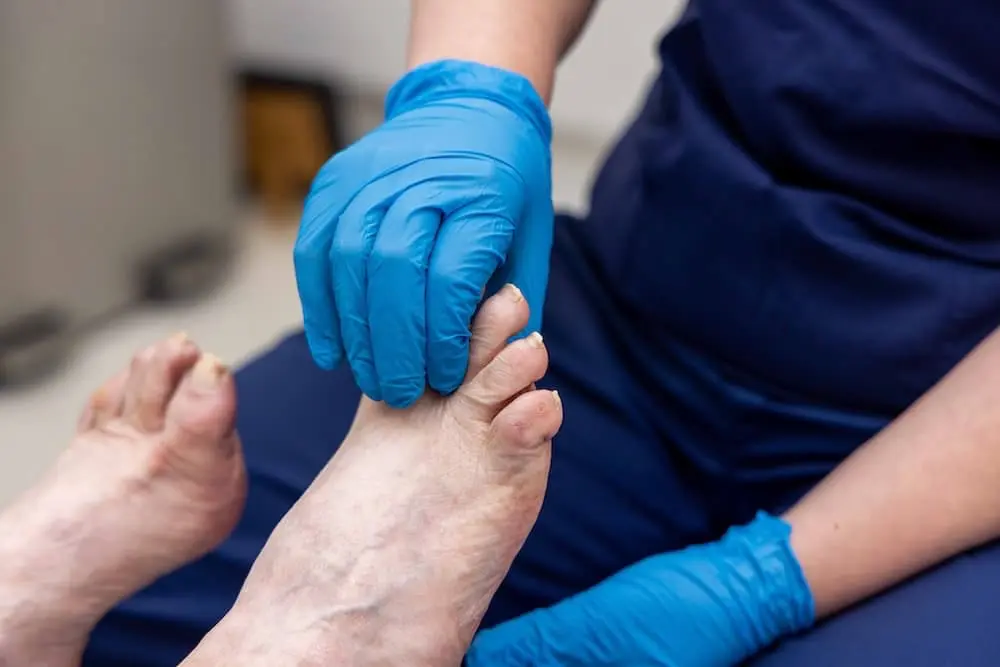CALLUS TREATMENT
Have you got hard skin on your feet? Is it painful or irritating? Do you want your feet to be in tip top condition? MyFootMedic offers solutions for calluses.

Services
WHAT IS A CALLUS?
A callus is a patch of hard, thickened skin. Often yellowish in colour (depending on skin tone), calluses are rough to the touch. They can develop on different parts of the body but are common on the feet, usually affecting the ball of the foot, the heel, or the outer side of the big toe.
For the most part, calluses are inconvenient but do not cause too much disruption. However, if left untreated, you might find that your calluses become uncomfortable when standing or walking.
Although they develop on the skin, calluses have nerves and bursal sacs (shock-absorbing, fluid-filled balloons) beneath them that can trigger shooting pains, aching or soreness. Untreated calluses can also cause the skin to crack and split, leading to bleeding and potential infection.
What causes calluses?
Calluses are thick, hardened areas of skin that form due to pressure or friction. They can develop on the feet, hands, or any other part of the body that experiences frequent rubbing or pressure. These common skin conditions can be uncomfortable and annoying, but with the right treatment, you can find relief.
Calluses are often formed due to a combination of factors. One common cause is wearing improper footwear. Shoes that are too tight or too loose can put excessive pressure on certain areas of the foot, leading to the development of calluses. Another contributing factor is the way we walk. If we put too much pressure on certain areas or have an abnormal walking style, it can lead to increased friction and callus formation.
Underlying issues or inherited bone deformities can also play a role in the formation of calluses. Conditions like bunions or hammertoes can cause the foot to rub against the inside of the shoe, leading to callus development. Additionally, the configuration of the metatarsal bones can contribute to callus formation. If the metatarsals are too long or too short, it can result in uneven distribution of weight and increased pressure on certain areas, leading to callus formation.
By understanding these various causes, we can take steps to prevent calluses and promote foot health.
What is the best callus treatment?
At MyFootMedic, we understand the discomfort and pain that calluses can cause. That’s why we offer effective callus treatment options to our patients. When it comes to treating calluses, it is crucial to address the underlying problem.
At our clinic, our experienced Podiatrists go beyond just treating calluses. We take a comprehensive approach by assessing your footwear, foot anatomy, and walking style to determine if they contribute to callus formation. We understand that over-the-counter callus removers may not always be sufficient, which is why our Podiatrists use medical instruments to carefully remove hard skin, providing you with long-lasting relief and feeling great.
In addition, we may recommend the use of insoles to provide better foot support and alleviate pressure points.
For individuals with more severe or recurring calluses, our Podiatrists may suggest personalised treatment plans that may include the use of medicated creams or even dermal fillers to restore the natural cushioning of your feet.
LET'S ANSWER YOUR CALLUS QUESTIONS!
Corns are usually small and localised, affecting a limited area of skin — often the tops or sides of the toes. Calluses, on the other hand, can impact larger areas. They often spread across the heel or ball of the foot. Calluses also tend to be less defined in shape than corns, which are generally circular. Please visit here to find out more about our corn removal treatment.
The fastest way to remove a callus is to see a podiatrist. Podiatrists are medical professionals who specialise in foot and ankle care. They have the knowledge and tools to effectively and safely remove calluses. They can also provide advice on proper foot care and recommend treatments for preventing future callus formation. If you’re experiencing pain or discomfort from a callus, it’s best to seek medical attention from a podiatrist to ensure the quickest and most appropriate treatment.
To permanently remove a callus, it is recommended to seek the assistance of a podiatrist. They are trained to safely remove corns and calluses without damaging the surrounding healthy skin and to assess why the callus has formed.
To prevent callus recurrence, it is important to eliminate the underlying cause. Wearing well-fitting shoes, practicing good foot care at home, and regular moisturising, can reduce your risk of calluses.
Consulting a podiatrist for appropriate treatment and care is highly recommended for more persistent calluses.
Treatment may consist of insoles to reduce pressure or dermal filler injections to cushion the skin.
The best callus treatment is to seek help from a podiatrist. Podiatrists are trained to safely remove calluses without damaging the healthy skin around them. They can diagnose the condition by scraping off some skin from the affected area, distinguishing it from warts.
Podiatrists may use sterile surgical blades to remove calluses, which is not usually painful. They can also provide advice on preventing the callus from returning and recommend suitable moisturising creams and pumice stones to soften and remove calluses.
Yes, callus is a condition characterised by the formation of hard, thickened patches of skin. It occurs as a protective response to friction or pressure on the feet. Calluses can develop on any part of the body but are more common on the feet.
If a callus is not treated, it can worsen and cause complications. Untreated calluses can continue to thicken and harden, leading to discomfort and pain. In some cases, the callus can crack and become susceptible to infection. This is especially concerning for diabetic patients, as infections can be serious and difficult to treat.
Additionally, untreated calluses can spread and develop into corns or affect the surrounding skin. It is advisable to seek treatment from a podiatrist to prevent further complications.
DON'T LET CALLUSES HOLD YOU BACK FROM THE FEET YOU DESERVE
Say goodbye to painful calluses and hello to the feet you deserve with our effective callus treatment solutions. We understand that calluses can be uncomfortable, unsightly, and even restrict your mobility. That’s why we have developed a range of innovative treatments that are designed to safely and efficiently remove calluses, providing you with immediate relief.
Don’t let calluses hold you back from enjoying life to the fullest. Trust our expert team to help you regain your confidence and comfort. With our comprehensive callus treatment options, you can step forward with ease and embrace the feet you truly deserve.




